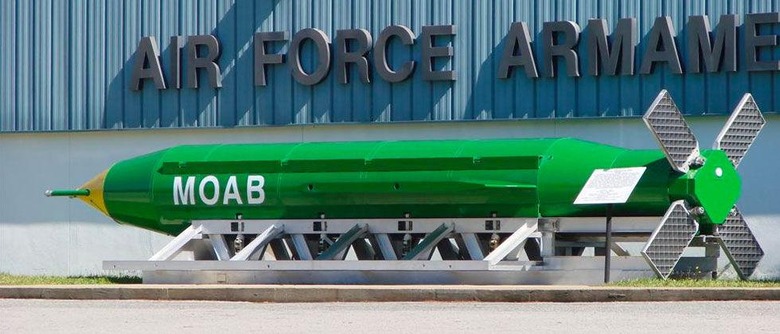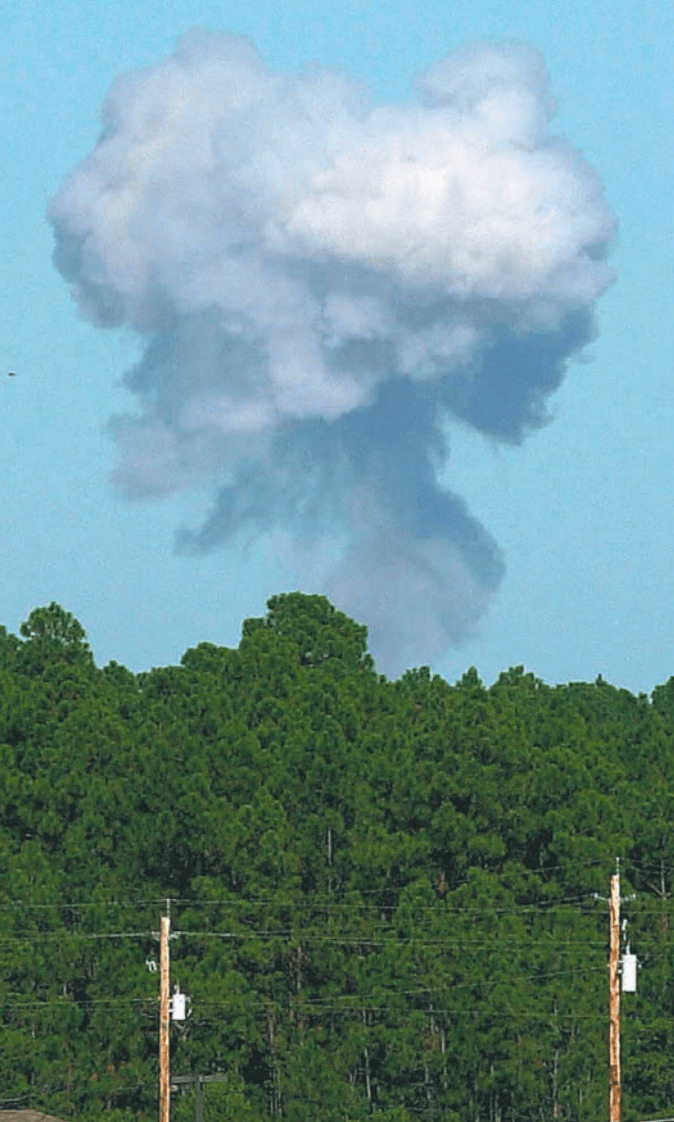What Is The MOAB GBU-43/B "Mother Of All Bombs"?
Nicknamed the "Mother of All Bombs", the MOAB GBU-43/B Massive Ordnance Air Blast bomb was the most destructive non-nuclear weapon designed (when it was first designed). The first use of this bomb on the battlefield was earlier today, April 13th, 2017, in the Nangarhar Province, Afghanistan. This bomb has a blast radius of more than a mile, and was originally designed to replace a bomb made for Vietnam War troops to create helicopter landing spaces in wooded areas.
The MOAB bomb
The bomb was originally developed at the Air Force Research Laboratory by Albert L. Weimorts, Jr. of the United States military. The bomb was developed to be carried and dropped by one airplane line, the Lockheed C-130 Hercules. In the Lockheed C-130 Hercules family, this bomb was designed to fit the MC-130E Combat Talon I or MC-130H Combat Talon II variants.
The MOAB is manufactured by McAlester Army Ammunition Plant in McAlester, Oklahoma. This device is a 21,000-pound fuel-air-explosive weapon which, according to the The National Review, the explosion generated by MOAB creates is such that it resembles "a small nuclear detonation."

Above you'll see the Lockheed Hercules USAF C-130E in a U.S. Air Force photo by Tech. Sgt. Howard Blair.
This bomb employs both a built-in GPS system and gyroscopes to guide it to its target. This bomb has a 40.5-inch diameter and is 30 ft 1.75 in long.
The MOAB was developed as a sort of next-gen version of the BLU-82 Daisy Cutter. The BLU-82 was originally used in the Vietnam War to cut down heavily wooded areas to create helicopter landing zones. BLU-82 was also used in the first Gulf War and early on in the ongoing Afghanistan War where it was largely used as an intimidation weapon. The BLU-82 was retired in the year 2008.
BLU-82 had a total blast yield of 7.5 tons of TNT. MOAB has a total yield of 11 tons of TNT. BLU-82 had a blast radius of 5,000 to 5,500 feet. There are 5,280 feet in a mile.
BLU-82 (BLU-82B/C-130) was delivered by a Lockheed C-130 Hercules. This is the same plane family as used to drop the MOAB, designed to take the place of BLU-82. This bomb was made as part of the Bush administration's "campaign to intimidate Saddam Hussein into relinquishing control of Iraq" according to Northwest Florida's Daily News back on March 13th, 2008. "The posturing failed," wrote Mladen Rudman, "War came." The image below is apparently the dust cloud sent up by the first bomb trial inside the United States – also from the Daily News.

Where it was dropped
The bomb was dropped inside of the Nangarhar Province in Afghanistan. This area of the country has a population of 1-million, 436-thousand people according to a 2013 census. The total area of this province is 2,983 mi². The area is shown in the embedded Google Maps section below this paragraph.
Nangarhar is a diverse region with both rocky environments and densely populated cities. The region is divided into 22-districts, and population density comes to about 480 people per square mile. You can find more information about this region – and populations of each individual district, on Wikipedia, where the information is archived.
According to the United States Air Force, "The strike used a GBU-43/B Massive Ordnance Air Blast bomb dropped from a U.S. aircraft. The strike was designed to minimize the risk to Afghan and U.S. forces conducting clearing operations in the area while maximizing the destruction of ISIS-K fighters and facilities."
Wrap-up
Our intent with this article is to give a clear and objective look at the hardware used in the major event that's taken place this week in Afghanistan. We do not yet know how many people were killed, whether or not civilians were killed, or what sort of impact this will have on the ongoing Afghanistan War. It is the magnitude of the potential with which this piece of technology executes its intended mission that I hope we've conveyed here today.
